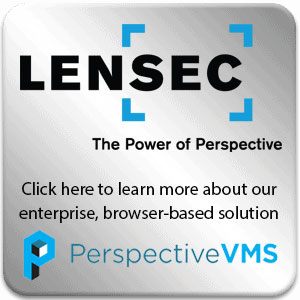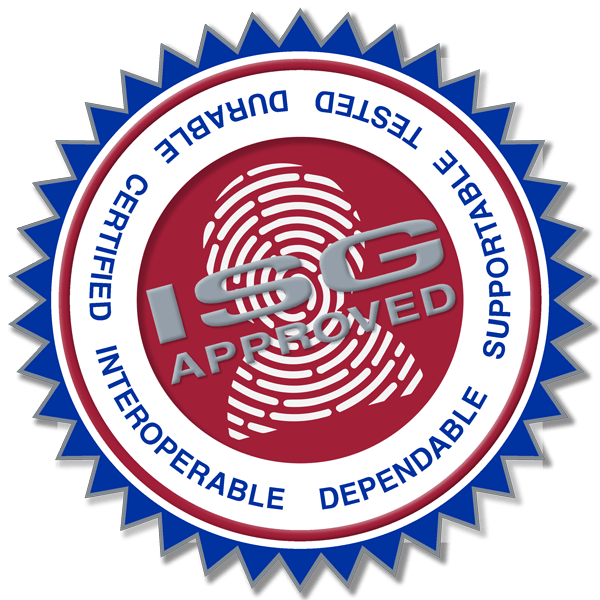Re-posted with permission from Campus Safety Magazine and edited.
Flexible video surveillance systems can help reduce the affects of the coronavirus crisis, as well as help security departments assess risks.
It’s becoming all the more clear with each passing day how deep and far-reaching the impact of the coronavirus crisis is and will likely continue to be. It has claimed too many lives already and taken a serious toll on just about all aspects of our collective, everyday lives. Physically and emotionally, COVID-19 has truly been an invisible, yet formidable enemy. It has also wreaked havoc on world economies, leaving many individuals unemployed, and small businesses and large companies alike bewildered as to how to best press on and remain solvent.
At the time of writing, the United Nations is describing this as the greatest global test since World War II. When this current phase of the pandemic is behind us, there will be much re-examination of the big policy questions — about health provision and the importance of investing more seriously in science education and research, about the vulnerability of our supply chains, and about what each level of government is responsible for, and should be preparing for, during non-crisis times.
Current Uses of Video Management Systems
As any trusted risk manager will tell you, there should be positive takeaways from any disaster, if we learn the right lessons, and invest resources where they are needed. If we think strategically, in the long run, this terrible time may leave us with lessons well-learned and improve our overall preparedness to deal with even more deadly threats to come.
But right now, a lot of people are working very hard to deal with the current situation and mitigate immediate risks. And while the health risks rank uppermost on the list, users of video surveillance solutions are finding they have new, unexpected risks to contend with. They must implement new applications for their video surveillance cameras and VMS capabilities.
In the restaurant sector, for example, national and regional chains that were previously using remote surveillance to check cash register transactions for their fraud investigations are now using the same tools to keep their outlets secure during enforced closure to the public. Only needed staff should now be onsite to handle the take-out ordering operations so critical to remaining solvent and retaining customers.
Locking down facilities to the public and furloughed employees has been critical during these times. So, rather than changing all the locks at their cafes, bars and restaurants — or securing them in a way that makes it obvious that unauthorized people can’t access the facility — alarm codes at each outlet can be updated instead. That way, if an alarm is triggered by someone not authorized to access the facility, remote video can be used to let management and/or security staff know of any suspicious activity.
Other use that remain open face the opposite problem. These organizations need to use video surveillance to keep their operations going and cope with overseeing more activity, not less.
With staffing pressure increasing on core services — in healthcare, first response, pharmacies, grocery stores and other essential service settings — the efficiencies that innovative video surveillance solutions for both perimeter protection and interior access control are providing have never been more critical.
Video Systems Put to the Test
For many years now, video surveillance manufacturers have been thinking about “worst case scenarios” and helping customers to strike a delicate balance between streamlining their operations and, at the same time, reducing risks. Across the industry, vendors and systems integrators have competed to find new tools and technologies that let end users do more with less: securing their vulnerable assets, managing people more safely, improving situational awareness, and providing newfound business and organizational efficiencies.
And, as an industry, we’ve known that it’s important to plan for the worst, so we’ve tried to design and test solutions to make them more robust and easier to use in times of stress. It’s clear now that increased stress is what we are all facing. In high-pressure work settings, video surveillance systems are being put to the test.
As the weeks pass, the mounting challenge for healthcare systems around the world will remain high to keep operations running, amid growing fears, patient admissions, and potentially fewer staff. At peak pressure, large numbers of front-line staff are being affected by the virus and/or self-isolating as the infection spreads. Maintaining a high level of security and ensuring that working environments remain safe is crucial.
How a Video System Can Help You
When security managers and team leaders are in self-isolation, how can they keep leading their operations? Remote applications and client software can make it practical for them keep working, even when isolated. The latest mobile apps can give them everything they need to run their own satellite video control operations, wherever they are. These can give them VMS-level functionality that includes live view, playback, searching, bookmarking, PTZ control, mobile dewarping for 360° fisheye cameras, event notifications and more.
Team leaders at many sites have already become accustomed to using these applications. Now, they will be needed as never before. To further streamline command, control and information sharing, VMS can now be easily set up with simple rules to allow targeted notifications to be sent to individuals and groups, via SMS or email.
As wider operations also come under pressure, security staff may be called on to provide back-up help. In supermarkets, for example, officers may need to interact more with customers during times of peak demand to ensure that people are social distancing and don’t attempt to stockpile when rationing is introduced. Video capabilities can surely help mitigate those issues before they escalate.
Solutions making use of the latest deep learning advances can also take pressure off security teams while still improving surveillance outcomes. Deep learning analytics can provide accurate and reliable detection of events such as falls, loitering or trip-zone and line-crossing, and they can give automated alerts. So even if security officers are busy, their video systems will still be hard at work in the background to maintain essential monitoring functions and to alert them to incidents, when necessary.
Accurate detection with fewer false-positives means better and more targeted responses — all helping to maintain security team effectiveness. And it’s not just security teams that can make good use of video surveillance during these difficult days. In healthcare settings, video surveillance systems have been used effectively by doctors, nurses, respiratory therapists, clinical staff, administrators and reception teams to enhance safety.
Video systems have allowed medical teams to monitor and review care delivery in a way that maintains efficient operations in their own wards and areas of responsibility. They’ve been used not just to maintain security but to review and improve clinical practice, which is so critically important during this pandemic.
The quality and reach of video surveillance coverage are now far better than those of just a few short years ago. Capabilities may be put to other very critical uses during these difficult days of COVID-19. These include the risks posed by crowd control failings, as they can be managed by staff on the ground watching footage of what’s happening and where with large gatherings, as well as video heat mapping that can give an overview to reveal pinch-points and recurring hotspots that hard-pressed front-line staff may overlook. These real-time video warnings can allow problems to be pre-empted.
Get Help from Your Local ISG Expert
Capable video surveillance solutions that are flexible can go a very long way in helping mitigate and assess the risks presented by COVID-19. While we may all feel somewhat helpless in mitigating the harm of this virus, we still can play a meaningful role in combating it. We can do this by providing all at risk with viable video surveillance solutions that can help reduce the impacts of this invisible enemy and work toward a better tomorrow for all.
Talk to your local ISG expert about your specific video surveillance and management needs. We can assist you with proven VMS solutions from trusted partners like LENSEC, and other well-known brands like Video Insight. Don’t wait until after your organization or campus has become a victim of break-ins or theft. Get the tools you need now to prevent them from happening, or to catch perpetrators in the act to recover your property.
Original article written by Jason Burrows for Security Sales & Integration


